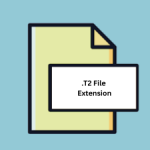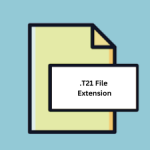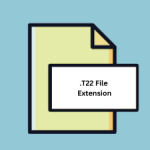.TIME File Extension

LIGHT File
| Developer | Light of Creativity |
| Popularity | |
| Category | Data Files |
| Format | .TIME |
| Cross Platform | Update Soon |
What is an TIME file?
Files with the .TIME extension, also known as LIGHT files, are a type of data container used for storing various kinds of information, typically related to time-sensitive data or structured data sets.
These files are utilized across different platforms for storing and accessing time-related information efficiently.
More Information.
The history of the .TIME file extension traces back to the increasing demand for managing time-sensitive information across various applications and platforms.
Initially, it might have been designed to cater to specific industries or software applications where precise time-related data handling was crucial, such as project management tools, scheduling software, or scientific research applications.
Origin Of This File.
The .TIME file extension likely emerged as a solution for organizing and managing time-related data in a structured and efficient manner.
As our reliance on technology grows, the need for standardized formats to handle diverse types of data becomes increasingly essential. Thus, the .TIME extension might have been developed to address this specific requirement.
File Structure Technical Specification.
The structure of .TIME files varies based on the specific application or purpose for which they are created. They generally follow a structured format that allows for efficient storage and retrieval of time-related data. This format may include fields for timestamps, durations, events, or any other relevant information.
Technical specifications for .TIME files may include:
- Timestamps: Representing specific points in time.
- Durations: Denoting the length of time between two timestamps.
- Events: Describing occurrences or actions at particular times.
- Metadata: Additional information about the time data stored in the file.
How to Convert the File?
Converting .TIME files to other formats or vice versa may require specialized software tools or scripts tailored to the specific conversion requirements.
While direct conversion methods may not be readily available due to the unique nature of .TIME files, it is possible to extract data from these files and convert them into formats compatible with other applications or systems. Here are some general steps you can follow to convert .TIME files:
- Identify the Desired Output Format: Determine the format you want to convert the .TIME file into. This could be a commonly used format like CSV (Comma-Separated Values), JSON (JavaScript Object Notation), or XML (eXtensible Markup Language), depending on your requirements.
- Extract Data from the .TIME File: Since .TIME files have a specific structure, you’ll need to extract the data contained within the file. This might involve writing a script or using specialized software tools capable of parsing .TIME files and extracting the relevant information.
- Format Data for Conversion: Once you’ve extracted the data, you may need to format it according to the specifications of the desired output format. This could involve arranging the data into rows and columns for a CSV file or structuring it as key-value pairs for JSON or XML.
- Convert the Formatted Data: Use appropriate software or scripts to convert the formatted data into the desired output format. This might involve using built-in functions in programming languages like Python or specialized conversion tools designed for specific formats.
- Validate and Review: After conversion, it’s essential to validate the output to ensure that the data has been accurately transformed into the desired format. Review the converted file to check for any discrepancies or errors.
- Save the Converted File: Once you’re satisfied with the conversion, save the converted file in the desired location with an appropriate file extension corresponding to the output format (e.g., .csv for CSV files, .json for JSON files).
Advantages And Disadvantages.
Advantage:
- Efficient Time Data Management: .TIME files provide a structured format for organizing and managing time-related data, enhancing efficiency in various applications.
- Compatibility: These files can be used across different platforms and software applications that support the .TIME format, ensuring compatibility and interoperability.
- Standardization: The .TIME extension promotes standardization in handling time-sensitive information, facilitating seamless integration and data exchange between different systems.
Disadvantage:
- Limited Compatibility: Not all software applications or platforms may support the .TIME file format, limiting its usability in certain environments.
- Lack of Universal Standard: While .TIME files offer a structured format for time data, there may be variations in implementation across different software systems, leading to compatibility issues.
- Complexity: Working with .TIME files may require an understanding of their specific structure and usage, which can be complex for users unfamiliar with the format.
How to Open TIME?
Open In Windows
In Windows, .TIME files can be opened using compatible software applications designed to handle this file format.
Users can either double-click on the file to open it with the default associated application or choose to open it with a specific program that supports .TIME files.
Open In Linux
Linux users can utilize compatible software tools or applications available for the platform to open .TIME files.
Depending on the distribution and software availability, users can either use default file managers or install specialized applications capable of handling .TIME files.
Open In MAC
On macOS, .TIME files can be opened using compatible software applications designed for the platform.
Users can double-click on the file to open it with the default associated application or select a specific program from the “Open With” menu.
Open In Android
Opening .TIME files on Android devices may require installing third-party applications capable of handling this file format.
Users can explore app stores to find suitable applications that support .TIME files and enable them to view or manipulate the data contained within.
Open In IOS
iOS users can leverage compatible applications available on the App Store to open .TIME files on their devices.
By installing an app capable of handling .TIME files, users can access and interact with the time-related data stored within these files.
Open in Others
For other platforms or software environments, opening .TIME files may involve similar processes, depending on the availability of compatible applications or tools tailored for handling this specific file format.
Users can explore software repositories or developer websites to find suitable solutions for their respective platforms.













